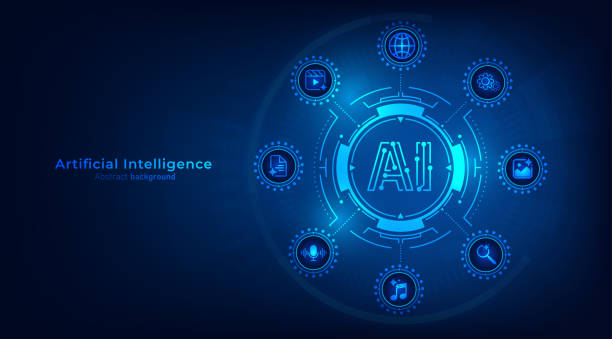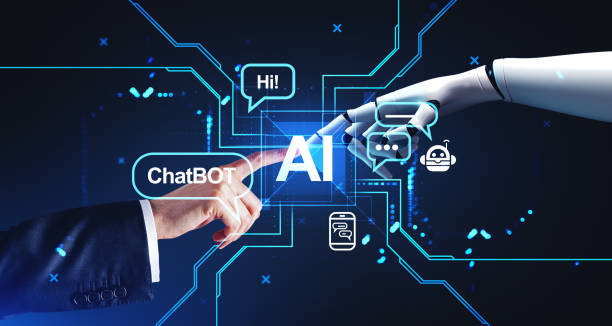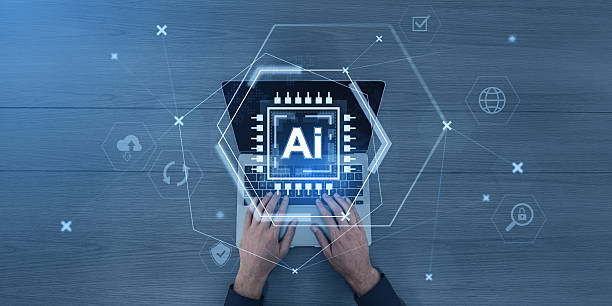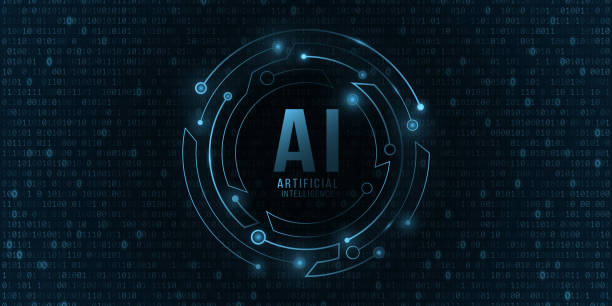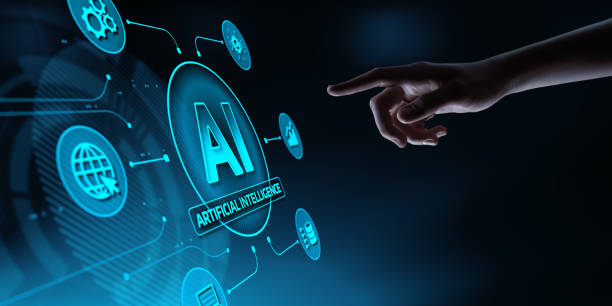What is Artificial Intelligence? Definitions and Key Concepts
What is Artificial Intelligence? Definitions and Key Concepts
#ArtificialIntelligence (AI) is a branch of computer science that deals with building machines that can perform tasks that typically require human intelligence.
These tasks include learning, reasoning, problem-solving, understanding natural language, and pattern recognition.
The main goal of #AI is to create systems that can think, learn, and make decisions independently.
There are many definitions of artificial intelligence, but one of the most common is the definition of John McCarthy, a computer scientist.
He defines artificial intelligence as “the science and engineering of making intelligent machines.”
This definition emphasizes the practical aspect of #AI and the effort to build systems that are truly intelligent.
Key concepts in artificial intelligence include Machine Learning, Deep Learning, Natural Language Processing, and Computer Vision.
Machine learning allows machines to learn from data without explicit programming.
Deep learning is a subset of machine learning that uses artificial neural networks to analyze data.
Natural language processing enables machines to understand and generate human language.
Computer vision allows machines to understand and interpret images.
Artificial intelligence is used in various fields, including medicine, finance, transportation, and manufacturing.
For example, artificial intelligence can be used to diagnose diseases, predict the stock market, drive autonomously, and optimize manufacturing processes.
Ultimately, artificial intelligence is a powerful tool that can be used to solve complex problems and improve human lives.
The website Wikipedia provides useful information about artificial intelligence.
Tired of your company’s website not being seen as it should be and losing potential customers? Solve this problem forever with professional and effective website design by Rasaweb!
✅ Increase brand credibility and build customer trust
✅ Attract targeted sales leads
⚡ Contact us now for a free consultation!
Types of Artificial Intelligence from Another Perspective
Click here to preview your posts with PRO themes ››
Types of Artificial Intelligence from Another Perspective
Artificial intelligence can be divided into different categories based on capabilities and type of operation.
In terms of capability, artificial intelligence can be divided into two general categories: Narrow AI or Weak AI and General AI or Strong AI.
Weak artificial intelligence is designed to perform a specific task and performs very well in performing that task, but cannot perform other tasks.
For example, a facial recognition system or a product recommendation system are examples of weak AI.
This type of #AI is currently very common and is used in many everyday applications.
Strong artificial intelligence is a type of artificial intelligence that can perform any intellectual task that a human can perform.
This type of #AI is still theoretical and has not yet been built.
Researchers are working on building strong artificial intelligence, but this is very difficult and complex.
In terms of type of operation, artificial intelligence can be divided into the following categories:
- Expert Systems: These systems use specialized knowledge in a specific field to solve problems.
- Machine Learning Systems: These systems use data to learn and improve their performance.
- Natural Language Processing Systems: These systems can understand and generate human language.
- Computer Vision Systems: These systems can understand and interpret images.
Each of these systems has its own specific applications and is used in different fields.
For example, expert systems are used in medicine to diagnose diseases and in finance to predict the stock market.
Machine learning systems are used in online advertising for targeting advertisements and in fraud detection.
Natural language processing systems are used in machine translation and in answering user questions.
Computer vision systems are used in self-driving cars and in facial recognition.
For more information, visit this reputable website.
Click here to preview your posts with PRO themes ››
Machine Learning, the Backbone of Artificial Intelligence
Machine Learning, the Backbone of Artificial Intelligence
Machine Learning is one of the most important sub-branches of artificial intelligence that allows machines to learn from data without explicit programming.
In fact, machine learning is a set of algorithms and techniques that allow computers to identify patterns in data and use these patterns to make predictions or decisions.
There are different methods for machine learning, including Supervised Learning, Unsupervised Learning, and Reinforcement Learning.
In supervised learning, the machine is trained using labeled data.
This means that each input data is associated with a correct output.
The machine tries to find a relationship between input and output and uses this relationship to predict the output for new data.
In unsupervised learning, the machine is trained using unlabeled data.
In this case, the machine must find patterns in the data independently.
Unsupervised learning can be used for tasks such as data clustering, data dimensionality reduction, and anomaly detection.
In reinforcement learning, the machine learns by trial and error.
The machine is placed in an environment and receives rewards or penalties for performing different actions.
The machine tries to learn how to perform actions that receive the most reward.
Reinforcement learning can be used for tasks such as computer games, robotics, and system control.
Machine learning has applications in many fields.
For example, machine learning is used in facial recognition, speech recognition, fraud detection, product recommendation, machine translation, and self-driving cars.
With the increasing advancement of technology, the applications of machine learning are expanding and are expected to play a more important role in our lives in the future.
| Learning Method | Description | Applications |
|---|---|---|
| Supervised Learning | Using labeled data for training | Facial recognition, fraud detection |
| Unsupervised Learning | Using unlabeled data for training | Data clustering, anomaly detection |
| Reinforcement Learning | Learning through trial and error | Computer games, robotics |
Diverse Applications of Artificial Intelligence in Today’s World
Diverse Applications of Artificial Intelligence in Today’s World
#ArtificialIntelligence is no longer a science fiction concept, but a tangible reality that has penetrated many aspects of our lives.
From medicine and finance to transportation and entertainment, #AI is changing the way we do things and solve problems.
In the field of medicine, artificial intelligence can help in diagnosing diseases, developing drugs, and personalizing treatments.
Intelligent systems can analyze medical images with greater accuracy and identify patterns that may be hidden from the human eye.
Also, #AI can play a role in discovering new drug compounds and predicting the effectiveness of treatments.
In the financial industry, artificial intelligence can help in predicting the stock market, detecting fraud, and managing risk.
#MachineLearning algorithms can analyze huge amounts of financial data and identify patterns that can be used for investment decisions.
Also, artificial intelligence can help in identifying suspicious transactions and preventing financial fraud.
In the field of transportation, artificial intelligence can help in developing self-driving cars, optimizing traffic, and improving road safety.
Self-driving cars use sensors and #AI algorithms to understand their surroundings and drive safely.
Also, artificial intelligence can help in optimizing traffic flow and reducing travel time.
In the entertainment industry, artificial intelligence can help in producing customized content, recommending movies and music, and developing advanced computer games.
Intelligent systems can learn the tastes of users and suggest content that they are likely to be interested in.
Also, #ArtificialIntelligence can play a role in producing realistic non-playable characters (NPCs) and developing interactive stories in computer games.
This article explores the applications of artificial intelligence in more detail.
Are you disappointed with the low conversion rate of your online store?
Rasaweb is your definitive solution with professional e-commerce website design!
✅ Increase your sales and revenue
✅ Unparalleled user experience for your customers
⚡ Get a free consultation now!
Natural Language Processing: A Bridge Between Humans and Machines
Natural Language Processing: A Bridge Between Humans and Machines
Natural Language Processing (NLP) is a branch of artificial intelligence that enables computers to understand and generate human language.
NLP is a multidisciplinary field that draws from computer science, linguistics, and statistics.
The main goal of NLP is to give computers the ability to communicate with humans in natural language.
NLP applications are very broad and include the following:
- Machine Translation: Automatic translation of text from one language to another.
- Sentiment Analysis: Determining the emotions present in a text, such as positive, negative, or neutral.
- Text Summarization: Generating a short summary of a long text.
- Question Answering: Answering questions posed in natural language.
- Chatbots: Computer systems that can converse with humans.
NLP is used in many industries.
For example, in the customer service industry, chatbots can answer frequently asked questions from customers and solve their problems.
In the healthcare industry, NLP can be used to analyze medical records and identify patterns that can help in diagnosing diseases.
In the media industry, NLP can be used to analyze user comments on social networks and identify their interests.
With the increasing advancement of technology, NLP is becoming a more powerful and practical tool.
NLP is expected to play a more important role in our lives in the future and help us communicate with computers in a more natural and efficient way.
One of the biggest advances in artificial intelligence right now is chatbots, in which NLP plays an important role.
The Future of Artificial Intelligence: Opportunities and Challenges
The Future of Artificial Intelligence: Opportunities and Challenges
Artificial intelligence is advancing at an increasing rate and is expected to play a much more important role in our lives in the future.
However, the advancement of #AI brings both opportunities and challenges.
Among the opportunities of #ArtificialIntelligence are the following:
- Improving productivity and efficiency in various industries
- Solving complex problems in areas such as healthcare, the environment, and energy
- Creating new jobs and technological innovations
- Improving the quality of human life through the automation of repetitive and dangerous tasks
Among the challenges of #ArtificialIntelligence are the following:
- Ethical concerns about the use of #AI, such as discrimination and privacy
- The potential loss of jobs due to automation
- The need to develop appropriate laws and regulations to control the use of #AI
- Security risks resulting from the use of #AI in cyber attacks
To fully exploit the opportunities of #AI and reduce its challenges, governments, industry, and society need to work together.
Investment in research and development of #AI should be increased and necessary training should be provided to prepare the workforce for future jobs.
Also, laws and regulations should be developed to ensure the responsible and ethical use of #AI.
The future of #ArtificialIntelligence is bright, but to achieve this future, we must actively address its challenges.
How Computer Vision Sees the World
How Computer Vision Sees the World
Computer Vision is an important branch of #ArtificialIntelligence that enables computers to understand and interpret images and videos.
In fact, computer vision tries to transfer human vision capabilities to computers.
These capabilities include object recognition, face recognition, pattern recognition, and scene understanding.
Computer vision applications are very broad and include the following:
- Self-Driving Cars: Detecting obstacles, traffic signs, and other cars.
- Face Recognition: Identifying people in images and videos.
- Medical Imaging: Helping doctors diagnose diseases by analyzing medical images.
- Quality Control: Detecting defects in manufactured products.
- Security: Monitoring premises and detecting security threats.
Computer vision uses various algorithms to process images and videos.
These algorithms include edge detection algorithms, pattern recognition algorithms, machine learning, and deep learning.
With the increasing advancement of technology, computer vision is becoming a more powerful and practical tool.
Computer vision is expected to play a more important role in our lives in the future and help us better understand the world around us.
This site provides information about computer vision.
| Application | Description |
|---|---|
| Self-Driving Cars | Detecting obstacles and traffic signs |
| Face Recognition | Identifying people in images and videos |
| Medical Imaging | Helping doctors diagnose diseases |
Ethical and Social Challenges of Artificial Intelligence
Ethical and Social Challenges of Artificial Intelligence
Along with the advancement of #ArtificialIntelligence, several ethical and social challenges arise that require careful consideration and finding appropriate solutions.
One of the most important of these challenges is discrimination.
#AI algorithms can unintentionally be discriminatory, especially if the data used to train them is biased.
For example, a facial recognition system may have less accuracy in recognizing the faces of people with dark skin tones if its training data mainly includes images of people with light skin tones.
Another challenge is privacy.
#AI systems can collect and analyze huge amounts of personal data, which can lead to a violation of people’s privacy.
For example, a product recommendation system may collect information about users’ previous purchases and use this information to recommend new products.
If this information is not properly protected, it may be accessible to unauthorized individuals.
Also, there are concerns about the impact of #AI on the labor market.
With the automation of repetitive tasks, many jobs may be lost and many people may become unemployed.
To address this challenge, it is necessary to provide the necessary training to prepare the workforce for new jobs.
Finally, there are challenges regarding the accountability of #AI systems.
If an #AI system makes a mistake, who will be responsible? For example, if a self-driving car has an accident, who will be at fault? To solve this challenge, it is necessary to develop appropriate laws and regulations to determine the accountability of #AI systems.
Finding answers to these challenges requires the cooperation and consultation of scientists and experts.
Are you tired of missing business opportunities due to not having a professional company website?
Rasaweb helps you with professional company website design:
✅ Build a powerful and reliable image of your brand
✅ Convert website visitors into loyal customers
⚡ Get a free consultation now!
Advanced Concepts in Artificial Intelligence: Deep Learning
Advanced Concepts in Artificial Intelligence: Deep Learning
Deep Learning is one of the most advanced sub-branches of #MachineLearning that uses artificial neural networks with multiple layers to analyze data.
These networks are inspired by the structure of the human brain and are capable of learning complex patterns in data.
Deep learning has made significant advances in recent years and has achieved very good results in many fields, including computer vision, natural language processing, and speech recognition.
One of the key features of deep learning is the ability to learn features automatically from data.
In traditional machine learning methods, engineers must manually extract important features from the data.
But in deep learning, neural networks can learn these features automatically.
This makes deep learning more suitable for solving more complex problems and handling voluminous data.
Deep neural networks consist of multiple layers, each layer being responsible for extracting specific features from the data.
The initial layers extract simple features such as edges and colors, while the subsequent layers extract more complex features such as objects and scenes.
By combining these features, the neural network can identify complex patterns in the data.
Deep learning has applications in various fields.
For example, in computer vision, deep learning can be used for object recognition in images, face recognition, and autonomous driving.
In natural language processing, deep learning can be used for machine translation, sentiment analysis, and answering questions.
In speech recognition, deep learning can be used for speech recognition and music recognition.
This complex technology is transforming human life.
How to Learn Artificial Intelligence: Resources and Solutions
How to Learn Artificial Intelligence: Resources and Solutions
Learning #ArtificialIntelligence can be an exciting and rewarding journey, but it requires effort and perseverance.
Fortunately, many educational resources are available that can help you on this path.
One of the best ways to start is to participate in online courses.
Educational platforms such as Coursera, edX, and Udacity offer numerous courses in the field of #MachineLearning, deep learning, and other topics related to #ArtificialIntelligence.
These courses are usually taught by leading university professors and include educational videos, practical exercises, and applied projects.
In addition to online courses, books and scientific articles are also valuable resources for learning #ArtificialIntelligence.
Textbooks can explain basic concepts comprehensively, while scientific articles examine more advanced topics and the latest achievements in this field.
To find suitable books and articles, you can use scientific search engines such as Google Scholar.
Also, participating in practical projects can help you gain a deeper understanding of #AI concepts.
You can strengthen your skills in #programming and implementing #ArtificialIntelligence algorithms by participating in open-source projects or doing personal projects.
To find suitable projects, you can use platforms such as GitHub.
Finally, connecting with other #ArtificialIntelligence enthusiasts can help you learn and progress.
You can ask your questions and use the experiences of others by participating in online groups and forums.
Also, attending conferences and seminars related to #ArtificialIntelligence can provide an opportunity to meet experts and learn from them.
With effort and perseverance and the use of available educational resources, you can become an #ArtificialIntelligence expert.
Always remember that learning is a continuous process and you should always look for new learning materials.
Frequently Asked Questions
| Question | Answer |
|---|---|
| What is artificial intelligence? | It is the simulation of human intelligence in programmed machines to think like humans and mimic their actions. |
| What are the main branches of artificial intelligence? | These include machine learning, deep learning, natural language processing, computer vision, and robotics. |
| What is Machine Learning? | It is a branch of artificial intelligence that focuses on enabling systems to learn from data and identify patterns without explicit programming. |
| Give examples of artificial intelligence applications in our daily lives. | Voice assistants (such as Siri and Alexa), recommendation systems in Netflix and Amazon, self-driving cars, and face recognition software. |
| What is Deep Learning? | It is a subset of machine learning that uses multilayered (deep) artificial neural networks to process large amounts of data. |
| What is Natural Language Processing (NLP)? | It is a branch of artificial intelligence that focuses on enabling computers to understand, interpret, and generate human language. |
| What are some of the ethical concerns related to artificial intelligence? | These include bias in data, privacy, job loss, and accountability in the event of errors. |
| What are the main benefits of artificial intelligence? | Increased efficiency, improved decision making, automation of repetitive tasks, and discovery of complex patterns in data. |
| How is artificial intelligence used in healthcare? | In diagnosing diseases, discovering drugs, analyzing medical images, and providing personalized care to patients. |
| How do you see the future of artificial intelligence? | It is expected to continue to develop at a rapid pace, affecting all aspects of human life, from industry to education and entertainment. |
And other services of Rasa Web Advertising Agency in the field of advertising
Intelligent Digital Branding: An effective tool for digital branding with the help of intelligent data analysis.
Intelligent Advertising Campaign: A creative platform to improve SEO ranking with precise audience targeting.
Intelligent Content Strategy: A creative platform to improve digital branding using real data.
Intelligent Marketplace: Designed for businesses looking to increase sales by customizing the user experience.
Intelligent Conversion Rate Optimization: A professional solution to increase website visits with a focus on marketing automation.
And more than hundreds of other services in the field of internet advertising, advertising consulting and organizational solutions
Internet Advertising | Advertising Strategy | Advertorial
Resources
What is Artificial Intelligence?
,Difference Between Artificial Intelligence, Machine Learning, and Deep Learning
,What is Artificial Intelligence?
,Artificial Intelligence on Wikipedia
? On the path of growth and transformation of your business, Rasa Web Afarin Digital Marketing Agency is with you with years of experience and specialized knowledge. With us, you will not only experience optimization and a powerful online presence, but also create your digital identity in the shortest time and with the highest quality with our professional services in the field of fast website design. Let us build your online success!
📍 Tehran, Mirdamad Street, next to the Central Bank, South Kazerun Alley, Ramin Alley, No. 6






